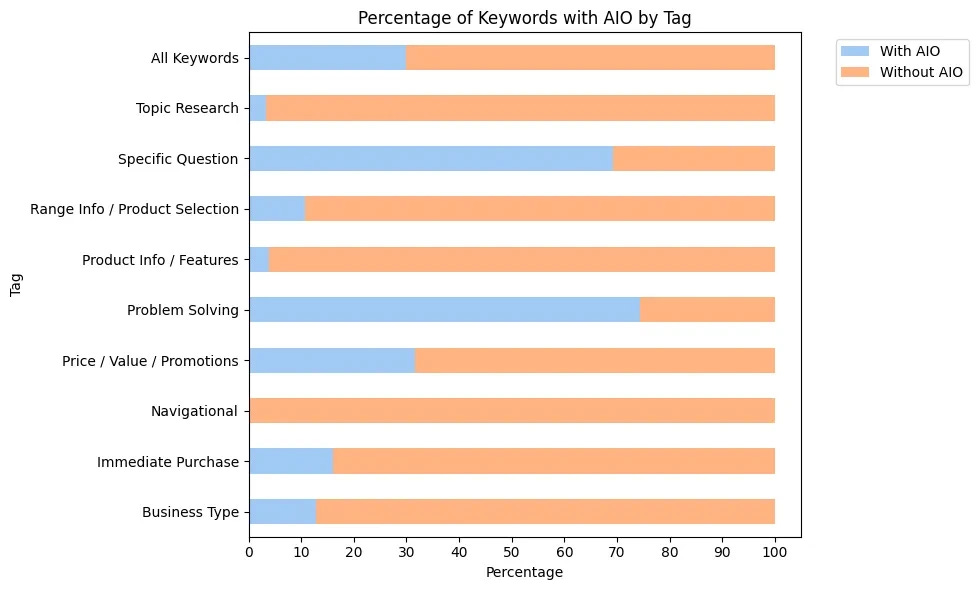The Post-Purchase Interrogation
🥹Turning Order Tracking Pages into Data Goldmines, Google AI Overviews Reshape Search Visibility, and more!
Howdy Readers 🥰
In this newsletter, you’ll find:
🗣️The Post-Purchase Interrogation: Turning Order Tracking Pages into Data Goldmines
🤖 Google AI Overviews Reshape Search Visibility
🎯 Tweet of the Day
If you’re new to Buyology then a hearty welcome to you, You’ve reached the right place alongside 50k+ amazing people, Before you forget, if someone forwarded this newsletter to you, don't forget to subscribe to our newsletter so you never miss out!
🗣️The Post-Purchase Interrogation: Turning Order Tracking Pages into Data Goldmines
Most brands treat post-purchase pages as transactional updates—a bland list of shipping milestones. But what if this overlooked touchpoint could become your secret weapon for customer retention, product innovation, and hyper-personalized marketing?
The average customer visits their tracking page 3-5 times before delivery. That’s 3-5 chances to gather insights, build loyalty, and turn satisfaction into advocacy.
The Opportunity: Three Ways to Mine Gold from Post-Purchase Pages
1. The "Post-Purchase Confessional" Quiz
After confirming their order is shipped, prompt customers with a quick, reward-driven survey:
“Take a 30-second quiz to improve your next order (and earn 15% off!).”
Ask hyper-specific questions:
→ “What almost stopped you from buying today?”
→ “Was this purchase for you or someone else?”
→ “Rate your checkout experience: Smooth or stressful?”
Why it works: Customers are most honest after buying. A 2022 Baymard Institute study found post-purchase surveys have a 42% higher completion rate than pre-checkout polls.
2. Conditional Discounts for Honesty
Embed a scratch card-style game on the tracking page:
“Scratch to reveal your reward!
Answer one question to unlock it: What’s one feature we’re missing?”Reward options: Free shipping on their next order, early access to sales, or bonus loyalty points.
Psychology hack: Gamification + instant gratification = 58% more feedback submissions (Journal of Marketing Research).
3. The "Upsell Autopsy"
Use the tracking page to subtly test future offers:
“While you wait… Which product should we launch next?”
→ Display 2-3 mockups (e.g., a new flavor, color, or bundle).
→ Track clicks to gauge demand before production.
Case Study: A skincare brand tested three serum concepts this way, using tracking page data to prioritize their R&D. The winning product generated $1.2M in pre-orders.
The Ethical Rules of Engagement
Transparency: Disclose how data will be used (e.g., “Your answers help us improve—never spam”).
Opt-Outs: Let users skip questions without penalty.
Anonymize: Aggregate sensitive feedback (e.g., pricing complaints) to protect privacy.
The Data Dividend
Reduce Returns: Spot trends like “Size ran small” to adjust product descriptions.
Predict Churn: Customers who report checkout friction are 3x more likely to abandon future purchases.
Fuel Personalization: Use gift-purchase data to trigger holiday campaigns (“They loved your last gift—here’s what to send next”).
The Bottom Line
Your order tracking page isn’t a dead end—it’s a focus group that customers voluntarily revisit. By transforming it into a two-way conversation, you gain actionable insights while making shoppers feel heard. The post-purchase phase is where loyalty is won or lost. Interrogate wisely.
🤖 Google AI Overviews Reshape Search Visibility
Insights from Authoritas
A new study analyzing 10,000 keywords reveals how Google’s AI Overviews (AIOs) are changing search results, dominating problem-solving searches, pushing organic results lower, and prioritizing authoritative sources over user-generated content.
The Breakdown:
AI Overviews Appear in 30% of Searches – AIOs showed up in 29.9% of searches but made up just 11.5% of total search volume. They are more common in mid-volume keywords (42%) than in high-traffic queries.
Problem-Solving & Non-Brand Queries Trigger AIOs – AIOs appeared in 74% of problem-solving and 69% of question-based searches. Telecom led with 56% AIO presence. 33.3% of non-brand searches triggered AIOs, compared to 19.6% of brand-related queries.
AI Overviews Push Organic Listings Down – Clicking “Show more” moves desktop results down by 220 pixels, reducing visibility for traditional rankings. On mobile, only 1-2 organic results are visible before scrolling.
Trust & Authority Matter – High-ranking pages and Featured Snippets have a greater chance of appearing in AI Overviews, but only trusted, authoritative sources like finance and health are consistently included.
Google is prioritizing trusted, research-driven content in AIOs, sidelining traditional rankings. Brands must optimize for Featured Snippets, E-E-A-T, and non-brand queries to stay competitive as Google shifts toward AI-driven answers.
🎯Tweet of the Day
Advertise with Us
Wanna put out your message in front of over 50,000 best marketers and decision makers?
Checkout our Partner Kit here🤝
At Buyology, we care about our readers and want to provide the best possible experience. That's why we always look for ways to improve our content and connect with our audience. It would be amazing if you could hit us up with feedback about our content or absolutely anything, we are always up for a chat 🥰
Thanks for your support, We'll be back with more such content 🥳


